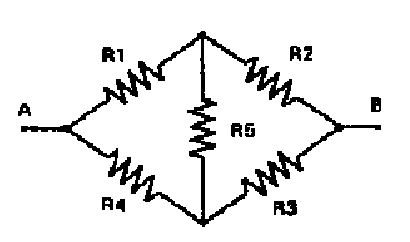Notes On Examination For Registration As A Grade B Electrical Worker
Appendix II
Examination Syllabus for Registration as a Grade B Electrical Worker
-
General Knowledge and Electrical Engineering Theories
- Familiarization of the Code of Practice for the Electricity (Wiring) Regulations and other relevant local legislative regulations and Electricity Ordinance such as obligations of electrical contractors and workers, registration requirements etc.
- Electrical circuit theories such as Ohm's Law, Kirchhoff's Laws, Thevenin's Theorem, star-delta transformation etc. Basic Principles of Alternating Current (a.c.) such as rms and average values of a.c. waveforms; power factor improvement; active and reactive power of a.c. circuits.
- Circuit calculations on d.c. and a.c. circuits comprising circuit elements such as resistance, inductance and capacitance; single-phase and three-phase circuits calculations; relationships between line and phase voltages in star-connected and delta-connected system.
-
Cables/Overhead Lines, Wiring Enclosures, Protective Devices/Conductors and Circuit Arrangement
- Application, characteristics, sizing and selection of different types of cables/overhead lines, voltage drop calculation; correction factors for groups of cables; cable bends and supports; cable jointing and termination; overhead lines clearance.
- Protection of cables/busbars against electromechanical and mechanical stresses; PVC and metallic conduits; trunkings; bends and supports.
- Overcurrent and earth fault protection, simple fault calculation for determining the rating of protective devices; operating principle, characteristics and application of different types of protection devices such as relays and switchgears on different types of electrical installation; protection against electric shock from direct and indirect contact; earthing arrangements, equipotential bondings and earthing electrodes; co-ordination and discrimination of protective devices.
- Categories and segregation of circuits; arrangement of final circuits feeding different types of socket outlets; circuit arrangements for specific types of installations such as bathroom, kitchens, busbar trunking, rising mains, temporary supply etc.; metering arrangement.
-
Transformers and Electrical Machines
- Application, principles and characteristics of different types of power transformers; simple calculation on voltage regulation, losses and parallel operation of transformers; terminal markings standard, winding connection and vector groups of three-phase transformer.
- Applications, principle of operation, characteristics and starting methods of different types of electrical machines such as synchronous machines, induction machines, d.c. machines etc.
-
Lighting
Application of different types of interior and exterior lighting equipments; characteristics and control gears of different types of lamps such as incandescent lamp, fluorescent lamp, sodium lamp etc.; installation and wiring of lighting equipments; stroboscopic effect.
-
Inspection, Testing & Commissioning
- Functional checks, various testing methods and commissioning test on different types of electrical installations such as transformers, generators, motors, cables/overhead lines, capacitors, switchgears, protective device etc.
- Types of tests and regulations required for a completed installation, major alternation of an existing installation and the periodic inspection.
Reference: Code of Practice for the Electricity (Wiring) Regulations, other related regulations, local Supply Rules, Electrical Engineering Handbook, relevant international standards and publications in connection with electrical installations.
Sample Questions of Examination for Registration as a Grade B Electrical Worker
1. Which of the following methods must be used before calculating the equivalent resistance between point A and B?

a. Series
b. Parallel
c. Series and parallel
d. Star-delta transformation
2. If the earth fault current in the circuit is 315A and the disconnectiontime for the protection device is found to be 1.2 sec. Calculate the size of the protective conductor used in this circuit. Assume the k value of the protective conductor used is 115.
a. 2.5 mm2
b. 4 mm2
c. 6 mm2
d. 10 mm2
3. Which of the following test is not a type test for switchboard:
a. Temperature rise
b. Short-circuit strength
c. Degree of protection
d. Internal arcing fault
4. Which of the followings is not correctly described?
a. Three-phase motor has better p.f. and is smaller in size for the same output as compared to single-phase motor, and has better efficiency.
b. Three-phase motor is self-starting, while single-phase motor has no starting torque.
c. The speed of 3-phase induction motor is easier to be varied when compared with single phase motor.
d. The torque produced by a 3-phase motor is of constant nature while the torque developed by a single phase motor is pulsating.
5. Overload protection is required at the point of reduction of current capacity. The reduced current carrying capacity is due to:
(i) reduction in cross sectional area of cable
(ii) different type of cable
(iii) change in ambient temperature
(iv) cable installed in a different manner and caused a change in heat dissipation
a. i, ii and iii
b. i, ii and iv
c. ii and iv
d. All of the above
6. When the low voltage electrical installation is completed, the insulation resistance to each other phase should not be less than
a. 50MΩ
b. 10MΩ
c. 1MΩ
d. 0.5MΩ
Appendix II

